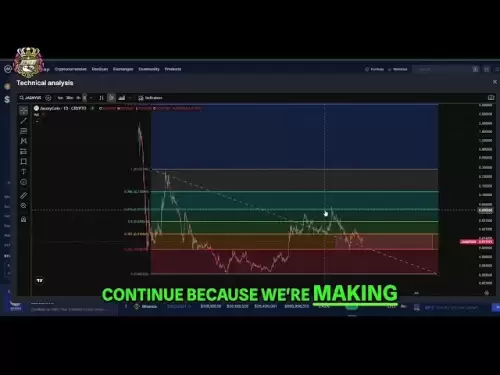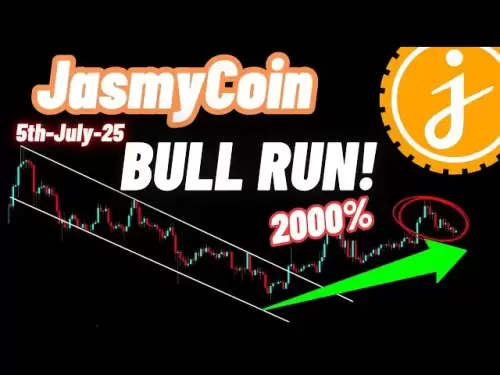-
 Bitcoin
Bitcoin $108,250.0992
0.11% -
 Ethereum
Ethereum $2,515.9404
0.03% -
 Tether USDt
Tether USDt $1.0003
0.00% -
 XRP
XRP $2.2166
-0.19% -
 BNB
BNB $656.5904
0.29% -
 Solana
Solana $147.4122
-0.58% -
 USDC
USDC $1.0000
-0.01% -
 TRON
TRON $0.2830
0.06% -
 Dogecoin
Dogecoin $0.1641
0.27% -
 Cardano
Cardano $0.5739
-0.19% -
 Hyperliquid
Hyperliquid $39.1463
-0.11% -
 Sui
Sui $2.8882
-0.02% -
 Bitcoin Cash
Bitcoin Cash $487.6428
0.31% -
 Chainlink
Chainlink $13.2097
0.07% -
 UNUS SED LEO
UNUS SED LEO $9.0308
0.10% -
 Avalanche
Avalanche $17.8608
0.13% -
 Stellar
Stellar $0.2379
-0.06% -
 Toncoin
Toncoin $2.7400
-0.39% -
 Shiba Inu
Shiba Inu $0.0...01144
-0.36% -
 Litecoin
Litecoin $87.5467
0.66% -
 Hedera
Hedera $0.1538
0.22% -
 Monero
Monero $315.5479
0.36% -
 Dai
Dai $1.0000
0.00% -
 Polkadot
Polkadot $3.3523
-0.71% -
 Ethena USDe
Ethena USDe $1.0003
0.01% -
 Bitget Token
Bitget Token $4.3960
-1.03% -
 Uniswap
Uniswap $7.2663
4.19% -
 Aave
Aave $272.8619
2.04% -
 Pepe
Pepe $0.0...09676
-0.18% -
 Pi
Pi $0.4586
-2.87%
What is the SPV node of blockchain? How does it verify transactions?
SPV nodes enable efficient blockchain interaction on devices with limited resources by verifying transactions using block headers and Merkle proofs, though they rely on full nodes' honesty.
Apr 27, 2025 at 07:56 pm
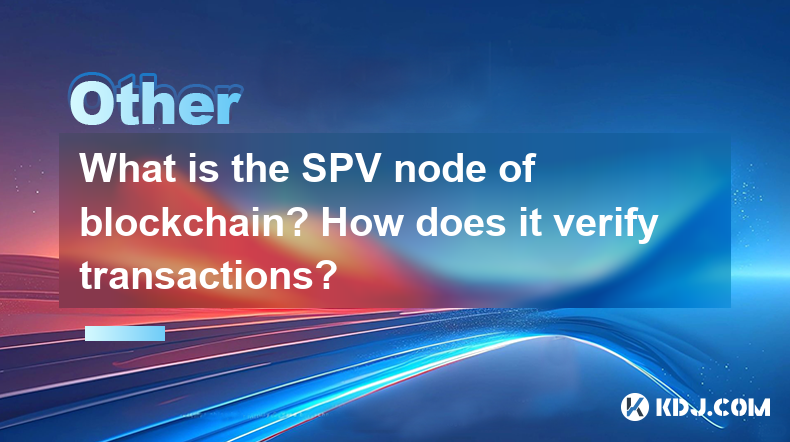
The concept of a Simplified Payment Verification (SPV) node, commonly referred to as a "light node," plays a crucial role in the world of blockchain technology. SPV nodes are essential for users who want to interact with a blockchain network without downloading the entire blockchain. This article will delve into what an SPV node is and how it verifies transactions, providing a comprehensive understanding of this important aspect of blockchain technology.
What is an SPV Node?
An SPV node, or Simplified Payment Verification node, is a type of node in a blockchain network that does not store the entire blockchain. Instead, it relies on a subset of the blockchain data, primarily focusing on block headers. This allows users to verify transactions without the need for extensive storage and computational resources.
SPV nodes are particularly useful for mobile devices and other systems with limited storage capacity. They enable users to interact with the blockchain, such as sending and receiving transactions, without the need to manage the full blockchain data.
How Does an SPV Node Work?
To understand how an SPV node functions, it is essential to grasp the concept of block headers. A block header is a small piece of data that summarizes the content of a block. It includes information such as the block number, timestamp, and the hash of the previous block, among other details.
When an SPV node wants to verify a transaction, it requests the block headers from full nodes on the network. These headers are much smaller in size compared to the entire block, making them easier to download and process.
Verifying Transactions with an SPV Node
The process of verifying a transaction using an SPV node involves several steps. The node must ensure that the transaction is included in a block and that the block is part of the valid blockchain. Here is how this is achieved:
Request Block Headers: The SPV node requests the block headers from a full node on the network. This includes the headers of the blocks that are believed to contain the transaction in question.
Check Merkle Proof: Each block header contains a Merkle root, which is a hash of all the transactions in the block. To verify that a transaction is included in a block, the SPV node requests a Merkle proof from a full node. This proof consists of a series of hashes that, when combined with the transaction's hash, can be used to reconstruct the Merkle root.
Verify the Merkle Root: The SPV node uses the Merkle proof to verify that the transaction is indeed part of the block. If the reconstructed Merkle root matches the one in the block header, the transaction is confirmed to be included in the block.
Check Block Chain Validity: To ensure that the block is part of the valid blockchain, the SPV node checks the chain of block headers. It verifies that each block header is linked to the previous one through their hashes, and that the chain leads back to the genesis block.
Confirm Transaction: Once the SPV node confirms that the transaction is part of a valid block and that the block is part of the valid blockchain, the transaction is considered verified.
Advantages of SPV Nodes
SPV nodes offer several advantages, particularly in terms of resource efficiency. By only downloading and storing block headers, they require significantly less storage space compared to full nodes. This makes them suitable for devices with limited resources, such as smartphones and tablets.
Additionally, SPV nodes can operate with lower bandwidth requirements, as they only need to download small amounts of data. This makes them faster and more efficient, especially in environments with limited internet connectivity.
Limitations and Security Considerations
While SPV nodes provide a convenient way to interact with the blockchain, they also come with certain limitations and security considerations. Since SPV nodes rely on full nodes for data, they are dependent on the honesty of these nodes. If a full node provides incorrect or malicious data, the SPV node may be misled.
To mitigate this risk, SPV nodes can connect to multiple full nodes and cross-verify the data they receive. This increases the likelihood of receiving accurate information, but it also adds complexity to the verification process.
Another limitation of SPV nodes is that they cannot independently validate the entire blockchain. They must trust that the chain of block headers they receive is accurate and that the full nodes providing this data are honest. This trust model is a trade-off for the resource efficiency that SPV nodes offer.
Practical Example of Using an SPV Node
To illustrate how an SPV node is used in practice, consider a user who wants to verify a Bitcoin transaction using a mobile wallet. The wallet application functions as an SPV node, and here is how it would verify a transaction:
- The user opens the wallet and initiates a transaction verification request.
- The wallet, acting as an SPV node, sends a request to multiple full nodes on the Bitcoin network to retrieve the block headers that are believed to contain the transaction.
- Once the block headers are received, the wallet requests a Merkle proof for the transaction from the full nodes.
- The wallet uses the Merkle proof to verify that the transaction is included in the block by reconstructing the Merkle root and comparing it to the one in the block header.
- The wallet checks the chain of block headers to ensure that the block is part of the valid Bitcoin blockchain.
- If all checks pass, the wallet confirms the transaction as valid and displays the result to the user.
This example demonstrates how SPV nodes enable users to interact with the blockchain efficiently, even on resource-constrained devices.
Frequently Asked Questions
Q1: Can SPV nodes be used on all blockchain networks?
A1: While SPV nodes are commonly used on networks like Bitcoin and Ethereum, not all blockchain networks support them. The implementation of SPV nodes depends on the specific design and features of the blockchain protocol. Users should check the documentation of the blockchain they are interested in to see if SPV nodes are supported.
Q2: How do SPV nodes handle blockchain forks?
A2: SPV nodes can handle blockchain forks by verifying the chain of block headers. If a fork occurs, the SPV node will request headers from multiple full nodes and compare the chains. It will then follow the chain that has the most cumulative proof of work, as this is typically considered the valid chain.
Q3: Are SPV nodes less secure than full nodes?
A3: SPV nodes are generally considered less secure than full nodes because they rely on data provided by full nodes. However, by connecting to multiple full nodes and cross-verifying data, SPV nodes can enhance their security. The trade-off is between resource efficiency and the level of trust required in the network's full nodes.
Q4: Can SPV nodes be used for mining?
A4: No, SPV nodes cannot be used for mining because they do not store the entire blockchain and lack the necessary data and computational power required for mining. Mining requires full nodes that can validate and process the entire blockchain.
Disclaimer:info@kdj.com
The information provided is not trading advice. kdj.com does not assume any responsibility for any investments made based on the information provided in this article. Cryptocurrencies are highly volatile and it is highly recommended that you invest with caution after thorough research!
If you believe that the content used on this website infringes your copyright, please contact us immediately (info@kdj.com) and we will delete it promptly.
- Ruvi AI: The Avalanche of Returns Crashing into the Crypto Scene
- 2025-07-06 08:30:13
- XRP's Wild Ride: Is a Parabolic Bull Run on the Horizon?
- 2025-07-06 08:30:13
- Bitcoin, Suspicion, and Billions: Decoding the Crypto Whale Moves
- 2025-07-06 08:50:13
- Bitcoin's Price Discovery Quest: Rally Structure Under the Microscope
- 2025-07-06 08:50:13
- Chainlink's Bullish Blueprint: Price Prediction and the Harmonic Pattern
- 2025-07-06 06:30:12
- Ruvi AI: The Audited Token Promising ROI That'll Make Your Head Spin
- 2025-07-06 06:30:12
Related knowledge
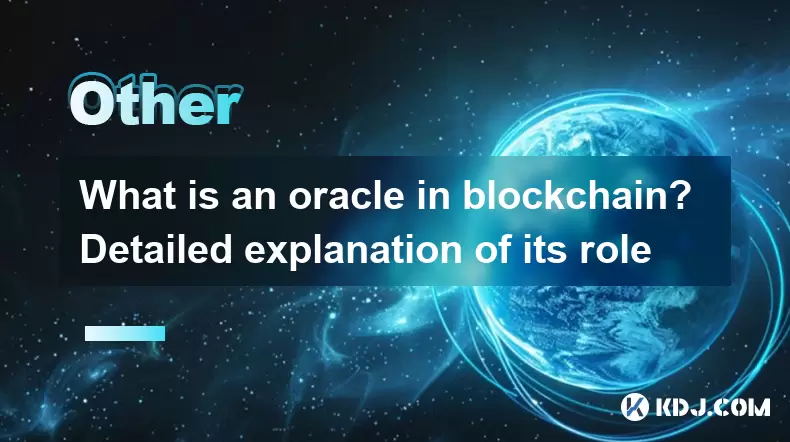
What is an oracle in blockchain? Detailed explanation of its role
Jun 21,2025 at 06:14am
Understanding the Concept of an Oracle in BlockchainIn the realm of blockchain technology, an oracle is a trusted third-party service that connects smart contracts with real-world data. Smart contracts are self-executing agreements where the terms are written directly into code and run on a blockchain network. However, these contracts operate in a close...
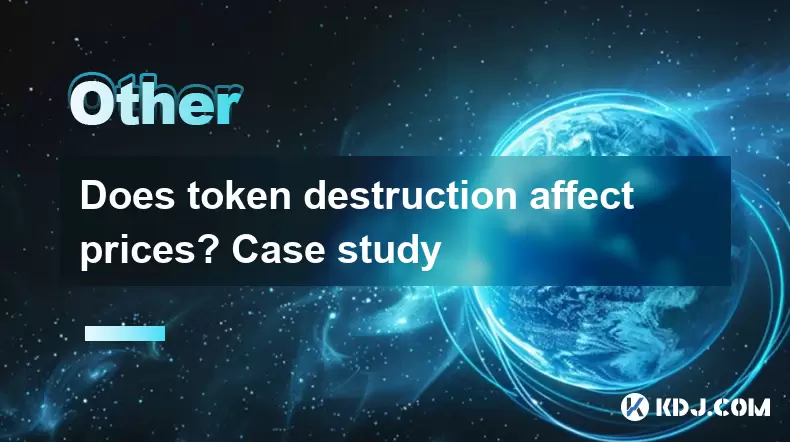
Does token destruction affect prices? Case study
Jun 22,2025 at 02:50am
Understanding Token DestructionToken destruction, commonly referred to as token burning, is a process where a portion of cryptocurrency tokens is permanently removed from circulation. This is typically done by sending the tokens to a non-recoverable wallet address, effectively reducing the total supply. Projects may implement token burns to create scarc...
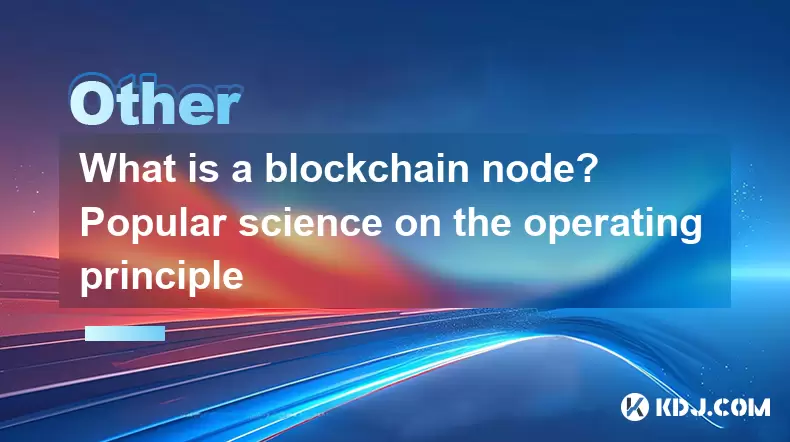
What is a blockchain node? Popular science on the operating principle
Jun 22,2025 at 11:00pm
Understanding the Basics of a Blockchain NodeA blockchain node is essentially a computer connected to a blockchain network that participates in validating and storing transaction data. Each node plays a critical role in maintaining the integrity, transparency, and decentralization of the blockchain. Unlike traditional centralized systems where a single ...
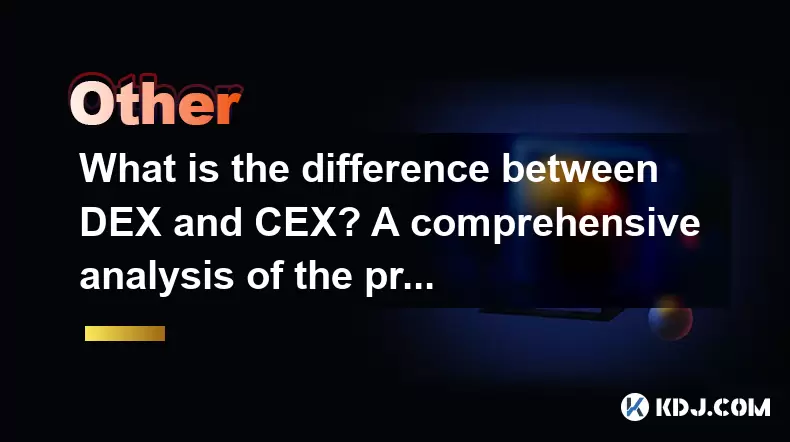
What is the difference between DEX and CEX? A comprehensive analysis of the pros and cons
Jun 24,2025 at 09:42am
What is a DEX (Decentralized Exchange)?A DEX, or Decentralized Exchange, operates without a central authority. Unlike traditional platforms, DEXs allow users to trade cryptocurrencies directly from their wallets. These exchanges rely on smart contracts to facilitate transactions, ensuring that no intermediary holds user funds. One of the most notable fe...
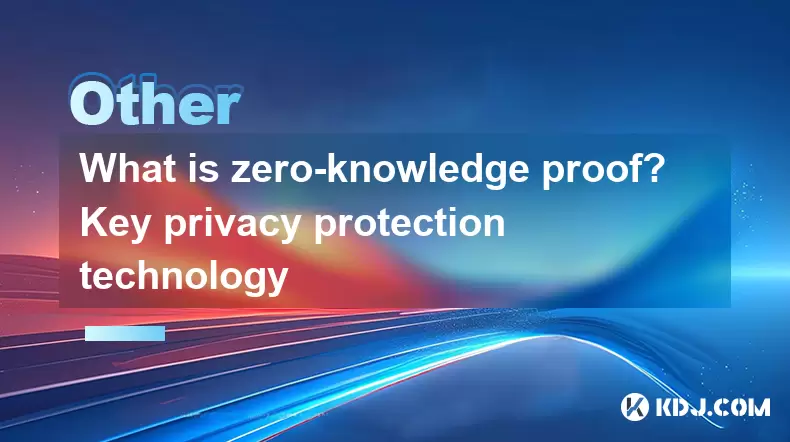
What is zero-knowledge proof? Key privacy protection technology
Jun 22,2025 at 07:29pm
Understanding Zero-Knowledge ProofZero-knowledge proof (ZKP) is a cryptographic method that allows one party to prove to another party that they know a value or information without revealing the actual content of that information. This concept is particularly important in the realm of privacy protection technologies, especially within blockchain and cry...
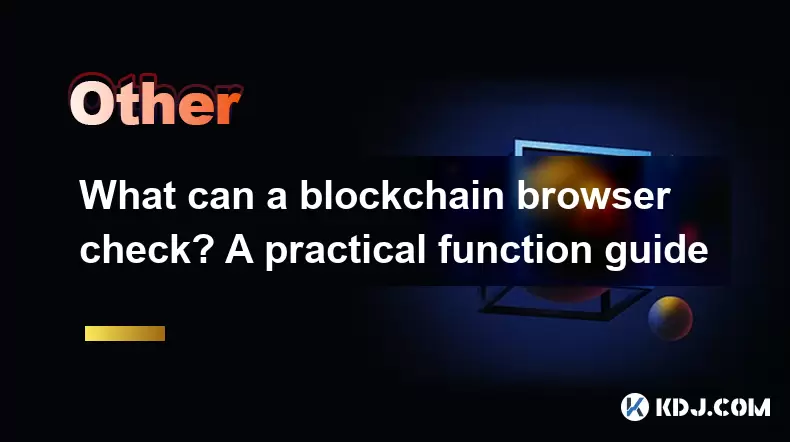
What can a blockchain browser check? A practical function guide
Jun 20,2025 at 07:35pm
Understanding the Role of a Blockchain BrowserA blockchain browser serves as a powerful tool for anyone interacting with blockchain networks. It allows users to explore, verify, and analyze data stored on the blockchain in real time. Unlike traditional ledgers or databases that are centralized, blockchains are decentralized and publicly accessible. This...

What is an oracle in blockchain? Detailed explanation of its role
Jun 21,2025 at 06:14am
Understanding the Concept of an Oracle in BlockchainIn the realm of blockchain technology, an oracle is a trusted third-party service that connects smart contracts with real-world data. Smart contracts are self-executing agreements where the terms are written directly into code and run on a blockchain network. However, these contracts operate in a close...

Does token destruction affect prices? Case study
Jun 22,2025 at 02:50am
Understanding Token DestructionToken destruction, commonly referred to as token burning, is a process where a portion of cryptocurrency tokens is permanently removed from circulation. This is typically done by sending the tokens to a non-recoverable wallet address, effectively reducing the total supply. Projects may implement token burns to create scarc...

What is a blockchain node? Popular science on the operating principle
Jun 22,2025 at 11:00pm
Understanding the Basics of a Blockchain NodeA blockchain node is essentially a computer connected to a blockchain network that participates in validating and storing transaction data. Each node plays a critical role in maintaining the integrity, transparency, and decentralization of the blockchain. Unlike traditional centralized systems where a single ...

What is the difference between DEX and CEX? A comprehensive analysis of the pros and cons
Jun 24,2025 at 09:42am
What is a DEX (Decentralized Exchange)?A DEX, or Decentralized Exchange, operates without a central authority. Unlike traditional platforms, DEXs allow users to trade cryptocurrencies directly from their wallets. These exchanges rely on smart contracts to facilitate transactions, ensuring that no intermediary holds user funds. One of the most notable fe...

What is zero-knowledge proof? Key privacy protection technology
Jun 22,2025 at 07:29pm
Understanding Zero-Knowledge ProofZero-knowledge proof (ZKP) is a cryptographic method that allows one party to prove to another party that they know a value or information without revealing the actual content of that information. This concept is particularly important in the realm of privacy protection technologies, especially within blockchain and cry...

What can a blockchain browser check? A practical function guide
Jun 20,2025 at 07:35pm
Understanding the Role of a Blockchain BrowserA blockchain browser serves as a powerful tool for anyone interacting with blockchain networks. It allows users to explore, verify, and analyze data stored on the blockchain in real time. Unlike traditional ledgers or databases that are centralized, blockchains are decentralized and publicly accessible. This...
See all articles





















